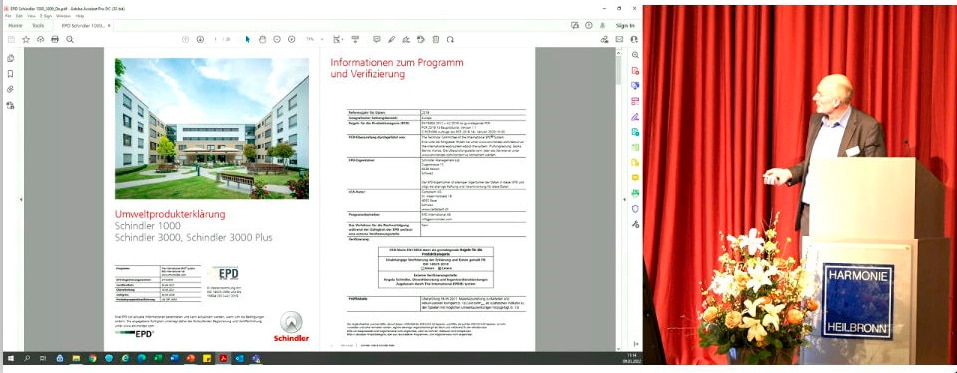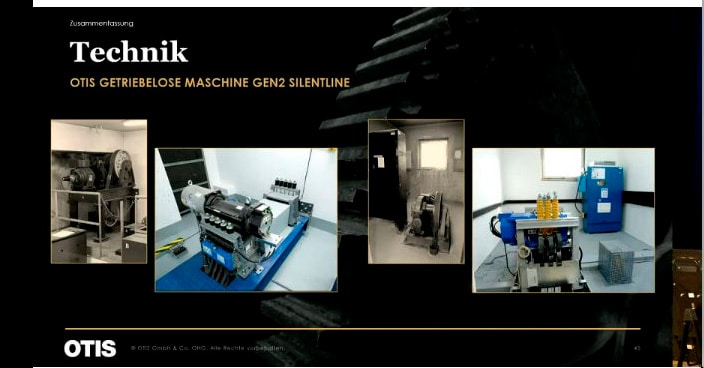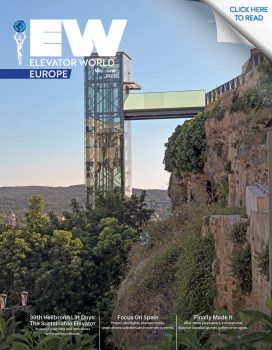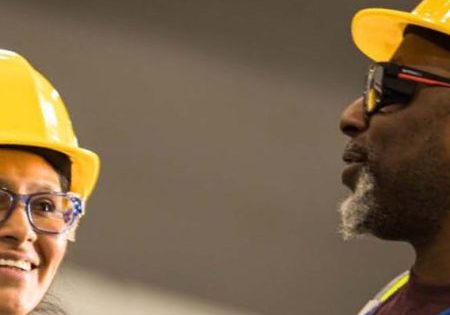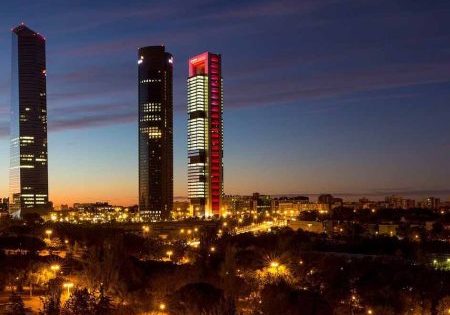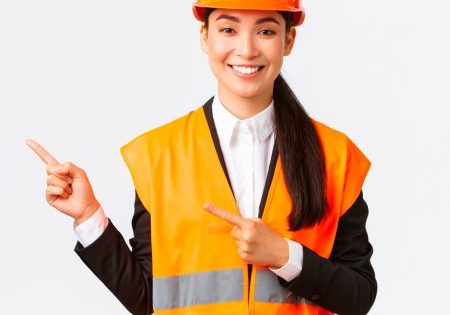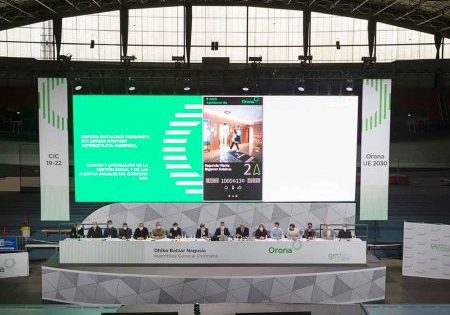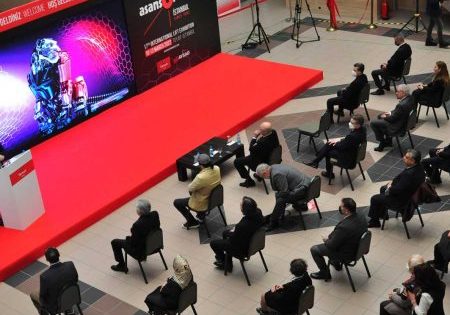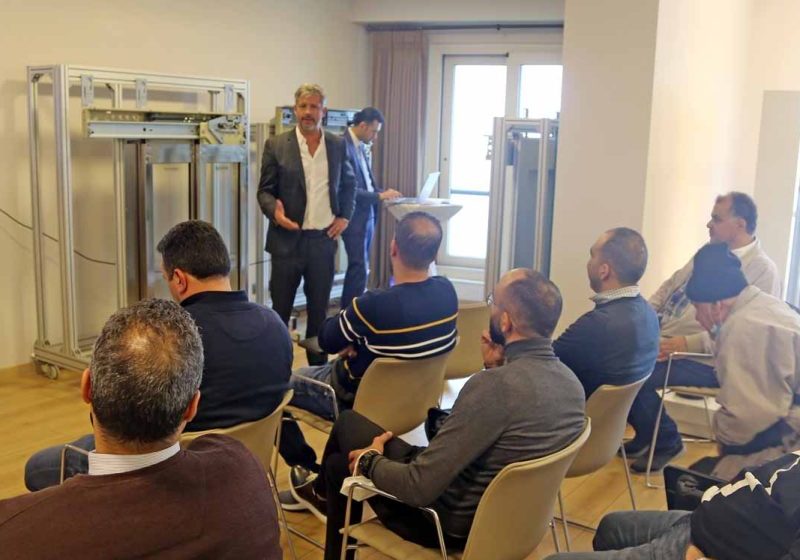39th Heilbronn Lift Days: The Sustainable Elevator
Jun 13, 2022

An event overview and interviews with two key officials
The 39th Heilbronn Lift Days was held at Harmonie Heilbronn in Heilbronn, Germany, in March with an accompanying exhibition. The event was held both in-person and online. In this report, your author gives a rundown of the presentations in chronological order and speaks with two individuals directly related to the success of the event.
André Podleisek, University of Applied Sciences Eastern Switzerland: Sustainability in the Lift Sector – An Overview
Podleisek introduced the topic of “sustainability” from a building/customer perspective. Buildings are the highest energy consumer in the EU:
- 35% of buildings are older than 50 years
- 75% of the building stock is not energy-efficient
- The renovation rate should be 3%, but currently reaches only 1%.
- Elevators currently account for less than 10% of total building energy consumption; by 2050 it will be 20%.
Sustainability from the customer’s point of view is first reflected in questions: Why was it built the way it was? Why, for example, does the concrete shaft for the elevator spoil my material balance? For example, the temperature in the elevator shaft on a construction site in southern Italy may be seen as a risk in terms of occupational safety. The Environmental Product Declaration (EPD), on the other hand, offers opportunities. To meet the sustainability expectations of customers, companies commit themselves to CO2 neutrality by date X, and also explain to their customers how to construct a “natural” building.
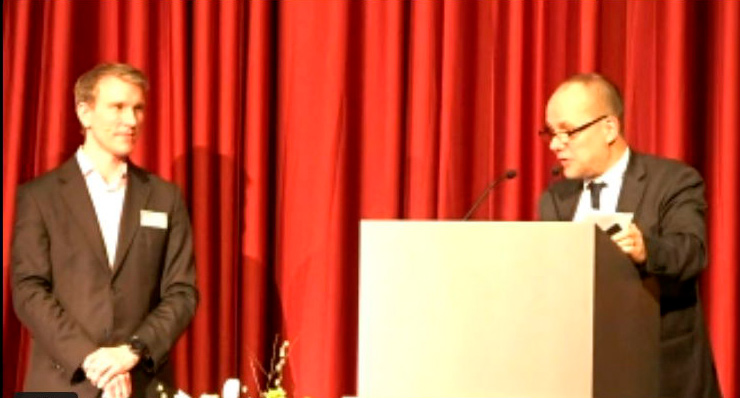
Jan Koenig, Lift Expert: The New Machinery Ordinance — Standards — Homelifts — Market
Koenig explained homelifts in compliance with the Machinery Directive MD 2006/42/EC. This will be replaced by the Machinery Products Ordinance (EU) 2022/xxx, machinery and safety components. The proposal has been available in German since 21.03.2021 (English version 18.11.2021). Publication in the Official Journal is expected in Q3 2022. The ordinance will come into effect on the 20th day after publication. As a result, market allowances will change. Other EU Directives will be adapted, including the Lift Directive (LD) 2014/33/EU. Annex 1 of the new ordinance deals with machines with a high risk, e.g., homelifts.

New technologies/cybersecurity will also be included. The transition period for new products is 30 months but will probably be extended to 42 months. Old products may continue to be distributed for another 42 months; an extension to 60 months is under discussion. Koenig presented the standards, market data, technical benchmarks and tests that apply to homelifts.
Matthias Trautner, Bosch Service Solutions: Predictive Maintenance and AI
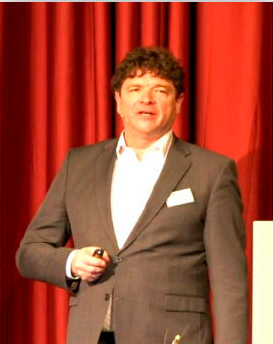
On the subject of digitalization, Trautner presented how connectivity can be used for predictive maintenance and what possibilities AI opens up in this context. The background for his speech is Bosch Lift Service, which rescues around 30,000 people from being trapped in elevators in Europe every year. His presentation was about applying Bosch’s experience with heating technology to elevators. Since indoor heating accounts for 79% of end-use building energy consumption in residential buildings, energy optimization of heating is the most promising approach to greater sustainability; up to 15% energy savings is possible with digital heating systems. In comparison, elevators in new buildings contribute only about 1% plus 3.2% in operation. To further optimize energy savings, system networking is required. The difficulty here currently lies in cross-manufacturer condition monitoring.
He then presented application and case studies from Bosch, such as video surveillance and fire alarm systems. Trautner sees the future in predictive maintenance with, for example, prediction of failures including remaining time until an incident.
Hartmut Hardt, Law Office Hardt: Legal Issues in the Elevator Industry — AI — Big Data — Data Ownership
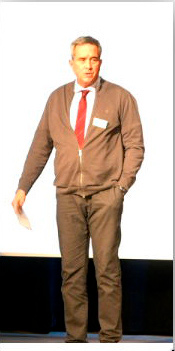
In his presentation, Hardt addressed the rights of ownership of data from the perspective of a lawyer. After defining terms, he presented a catalog of questions/criteria for assessing data protection compliance for collected data:
Am I free to process personal data? Security is provided, for example, by consent to use the data.
- Is the gathering necessary and useful? “I need the data for … and then they will be processed in such-and-such a way.”
- Data must be correct.
- Data must be handled confidentially.
Particularly in the case of AI decisions, the following applies additionally:
- How are AI systems monitored?
- How is transparency and user/affected party input ensured?
An EU proposal for an ordinance to establish harmonized codes for AI has been on the table since March 21, 2021. Until it is enacted, the General Data Protection Ordinance applies.
Volker Sepanski, TÜV Rheinland Industrie Service: The National Regulatory Framework: ProdSG ÜAnlG BEtrSichV
The new Product Safety Act (Produktsicherheitsgesetz ProdSG) includes: Systems To Be Inspected Act (Überwachungsbedürftige Anlagen-Gesetz ÜAnlG), Ordinance on Industrial Safety and Health (Betriebssicherheitsverordnung BetrSichV), other influences such as Construction Law, Water Resources Law and State Ordinances. The ProdSG and the ÜAnlG have been in effect since July 27, 2021.

The ProdSG applies when, in a business activity, products are made available on the market, exhibited or used for the first time. The (harmonized) standards and other technical specifications apply (see baua.de). The conformity assessment body performs, among other things, calibrations, tests, certifications and inspections. The manufacturer is responsible, among other things, for CE marking the products. Market surveillance is carried out by the respective state authorities.
The ÜAnlG applies to the construction, modification and operation of systems to be inspected. The objective is to ensure the safety and health protection of employees and other persons in the hazardous area. Operators are increasingly involved in this process: They must prepare a risk assessment and act accordingly. The approved inspection bodies (zugelassene Überwachungsstellen (ZÜS)) are responsible, among other things, for carrying out inspections. The approval authority is the Central Office of the Federal States for Safety Technology (Zentralstelle der Länder für Sicherheitstechnik zls-muenchen.de), which is responsible, along with its other duties, for drawing up regulations, e.g., for the admission of ZÜS.
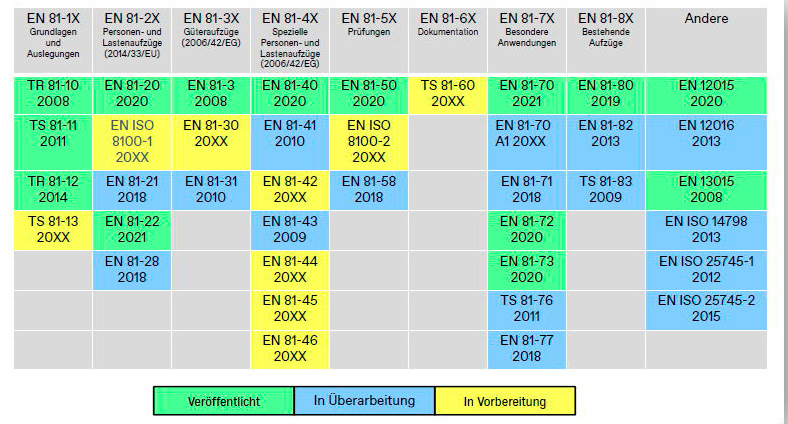
The supervisory authorities at the federal states supervise compliance with this law including ordinances and have the authority to do so with respect to the ZÜS and operators. The Federal Ministry of Labor and Social Affairs may issue regulations, including the catalog of systems to be inspected (currently contained in the BetrSichV). Regulations on fines and penalties can be found in the catalog of fines of the BetrSichV.
As a result, BetrSichV, TRBS 3121, and TRBS 1201 Part 4 will be adapted to the terms used in ProdSG and ÜAnlG. All federal states must join the register of installations (Anlagenkataster ANKA). The ZÜS ordinances of the federal states must be adapted. The ZÜS must update their QM systems. Operators must implement post-inspections and correction of defects.
Jonas Conradi, TÜV SÜD Industrie Service: Brexit and the Elevator Industry

Conradi contributed the regulatory implications of Brexit for the elevator industry. He compared the CE mark and UKCA mark, including the respective ways to get them. He observed that the additional certification is necessary. It will also cost money, but is not that difficult because the changes are not blatant, but mostly limited to wording. Harmonized standards correspond in content to the designated standards in the U.K. Some numbers have been changed. Actually, everything should have been implemented by January 1, 2021; however, the CE/UKCA transition period has been extended until January 1, 2023. As a possible contact, he mentions TÜV SÜD, which is, in the U.K., allowed to call itself an Approved Body.
Axel Stohlmann, TÜV Nord Systems: Accidents in Conveyor Technology or “the Invisible Third Party”
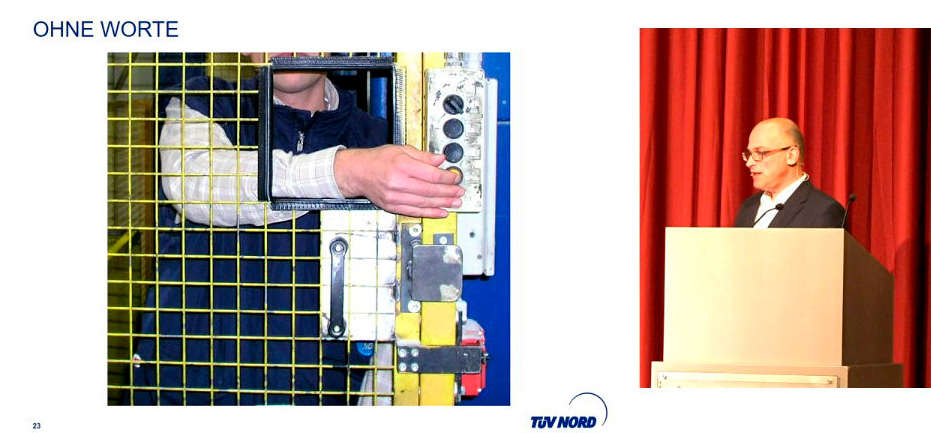
The report on accidents in conveyor technology was a crucial component of Stohlmann’s presentation. An accident that has to be reported to the Employer’s Liability Insurance Association (Berufsgenossenschaft (BG)) is when a BG insured person is killed or was unable to work for more than four days. “Invisible third parties” he says, are persons who are not employees and whose accidents related to elevators are not always reported.
The accident statistics of the TÜV association showed 15 incidents involving personal injury on elevator installations in Germany in 2021, including two fatal accidents; in 2020, 18 incidents were recorded with one fatal accident. Trips and falls by users, e.g., due to insufficient stopping accuracy, and injuries caused by door movements, were the main causes. More recently, there have been several serious or fatal accidents involving employees in connection with machine-room-less elevators and temporary shelters; in all cases, misuse or disregard of instructions was the cause.
In 2020, the accident statistics of the German Social Accident Insurance (Deutsche Gesetzliche Unfallversicherung DGUV) show 165 reportable accidents involving escalators/conveyors and 645 involving elevators, including one fatality. In Austria, an average of 100 accidents per year are reported to TÜV Austria. Extrapolated to the German number of elevators with a factor of 6-7, this would correspond to 600-700 accidents in Germany per year. This figure matches the DGUV statistics, whereas the TÜVs only recorded 20. Escalators in Austria had around 500 accidents per year.
Fatal accidents are more likely to occur during servicing and assembly. When it comes to users, handicapped people are more likely to be affected. Causes of accidents include time and performance pressures, a combination of unfortunate circumstances, adverse weather, fill-in staff when regular employees are on vacation, misunderstandings in communication and improper use of work equipment.
Supports are not set up, for example: “I just want to take a quick look. I don’t want to drive.” In the picture, a hole was cut in the separating protective space with bearings so that the machine could also be started from the inside. The design did cost the life of one person; the employee was pulled in by the machine. As a conclusion, Stohlmann states de jure today everything is sufficiently regulated, but there is a lack of implementation.
Anton Hulm, Schmitt + Sohn Aufzüge: Building Information Modeling – Benefits for SMEs
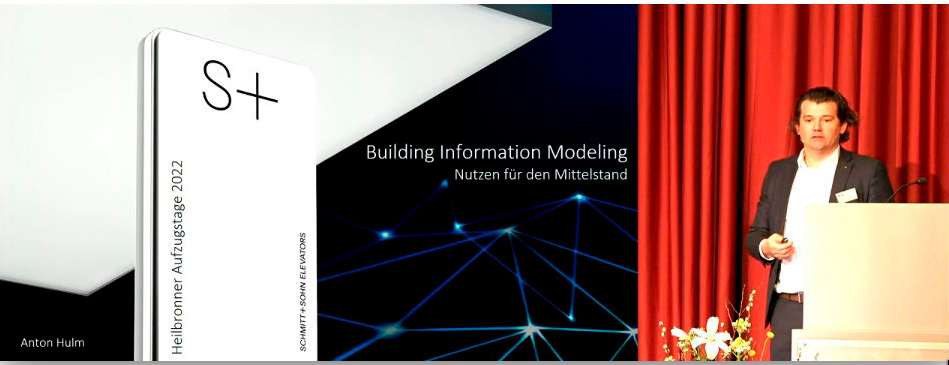
Hulm looked at Building Information Modeling (BIM) from a small and medium-size enterprises (SME) perspective. For the elevator industry, the requirements can be found in VDI 2552 Part 11.5 Draft July 2021. The objection period ran until the end of 2021; around 50 objections were received from manufacturers, from the committee itself, and from specialized planners. The final version is scheduled for July 2022. The paper outlines the planning process; the service process will follow later. Elevator manufacturers, architects and planners, as well as software manufacturer DigiPara, were among those who participated in the committee.
The aim of the VDI standard is to enable the exchange of elevator models (specialized elevator model) without the need for queries. The VDI standard covers preliminary planning LOD 100, quotation planning LOD 200 and execution planning LOD 300.
Simply supplying data as an elevator manufacturer is not a BIM process. How to establish a BIM process is the aim of the VDI standard — especially for SMEs. Many opportunities are already emerging, including new business models, because decision-makers are making decisions earlier, and salespeople are being replaced by internet research, for example. Digital twins offer full transparency regarding components used, which in turn leads to changes in the aftersales market. To play along as a SME for as long as possible, the status quo in the company must always be questioned in order to develop and implement a consistent digitalization strategy.
Roger Beuret, Schindler Research and Development: The Life Cycle Assessment of the Elevator
Beuret explained the terms that are important for life cycle assessments (LCA). An Environmental Product Declaration (EPD) is an independently verified and registered document that communicates information on the environmental impact of products during their life cycle. It follows the procedure in ISO 14025 and is valid for five years. The EPD is based on the LCA according to ISO 14040. The procedure takes into account the Product Category Rules (PCR) from ISO 14025. As an example, Beuret presented the EPD for the Schindler 1000 product. Such EPDs are published on the internet by program operators such as the Institute for Building and the Environment (Institut für Bauen und Umwelt IBU ibu-epd.com), but so far, at least there, without elevators.
Beuret then went into more depth on the subject of PCR. EN 15804+A2 define the basic rules for all construction products. PCR 2019 contains 14 construction products to implement EN 15804+A2 and serves as a basis for the development of c(omplementary) PCRs. c-PCR-008 Elevators contains complementary elevator-specific rules. A comparison between the products Schindler 3000 and Otis Gen360 showed that the products are probably approximately equivalent because only three of nine aspects to be considered are the same.
Beuret also elaborated on LCA. Elevators are following the cradle-to-grave approach. The focus is on material consumption, based on the French electricity mix with a lot of nuclear energy and, therefore, little CO2. For the EU electricity mix, energy consumption and material consumption are on the same level. The influence of use can be seen, for example, in the shift of use categories. The service technicians’ journeys to and from the system also have a major influence.
Harald Wilhelm, Otis Germany Codes and Standards: Sustainable Modernization Solutions
Wilhem’s contribution transferred theory into practice of sustainable elevator products for modernizations in existing buildings. Special products were developed for this purpose, such as polyurethane belts, gearless machines, regenerative drives, LED lighting and standby energy control.
Wolfram Vogel, Publicly Appointed and Sworn Expert: Technology Comparison of Traction Media
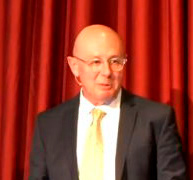
Vogel compared the standard steel wire ropes compliant with the standard, small steel wire ropes on small sheaves, plastic-coated steel ropes, flat belts and high-strength fiber ropes used in the elevator sector, for which he predicted a future use in special applications. In the future, traction media must be able to carry + think (give signals) + steer (trigger actions).
Stephan Störmer, TÜV Austria, and Georg Spitzer, Variotech: Functional Safety (FuSi) — PESSRAL in Practice — Certification, Utilization, Testing
Störmer explained functional safety (Funktionale Sicherheit (FuSi)) together with Spitzer. Programmable Electronic Systems in Safety Related Applications for Lifts (PESSRAL) are safety circuits with programmable electronic systems. All components for FuSi are listed in EN 81 with minimum SILS. Hardware and software are used and connected/activated by means of a script. These devices can be safety relevant or must be functionally safe, e.g., a door contact. There are overlaps between PESSRAL and FuSi. FuSi looks at sub-systems and combines them to a safe function, while PESSRAL looks only at the individual components. A switch may have SIL3, but if one element in the chain has SIL1, the entire chain becomes SIL1. Applications will grow in the future and must be certified accordingly.
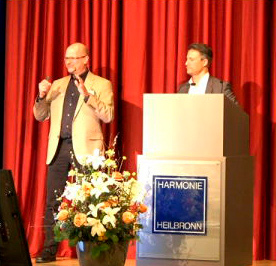
Interview with Klaus Dietel, TÜV NORD Industrie Service
The 39th Heilbronn Lift Days event and accompanying exhibition were devised and moderated for the 10th tenth time by Klaus Dietel (KD) from TÜV NORD Industrie Service. In an exclusive interview with your author (USB), Dietel talks about the general setting and his intentions regarding content.
USB: What is the relationship between you, Heilbronn University and Heilbronn Technical Academy as the event host?
KD: Heilbronn Technical Academy is based at the university and offers events in professional further education, in addition to elevators, on subjects including explosion protection, doors and gates. I have been in charge of concept and chair since 2012, with a board of trustees assisting with the concepts.
USB: How many participants were present on-site or online in 2022? Were there more or less than in previous years? Which groups were most represented?
KD: To my knowledge, there were about 150 in attendance and another 50 or so online; that’s better than 2021 but, of course, falls short of pre-COVID days. There was a good mix of installation and service companies, component manufacturers, operator representatives, test organizations, consultants/planners and others.
USB: How did you decide on this venue?
KD: By the time I assumed the chair of the Lift Days in 2021, the university auditorium that had been used until then was undergoing reconstruction; in the process, a gallery was removed, so that the capacity was no longer sufficient for the 300 participants who regularly attended in pre-coronavirus times. Since then, we have been using the Harmonie Heilbronn as it is “the largest venue of its kind in the Heilbronn-Franken region.” So, this has also become a tradition.
USB: Where did the social program take place this time?
KD: The evening event, planned at short notice, took place this time directly in the Harmonie with a buffet and wine tasting provided by the Cooperative Winery.
USB: What impact did COVID-19 have on the event?
KD: The academy had to repeatedly react on extremely short notice to the dynamics of COVID-19 regulations and, in my opinion, did a very good job in this again. There was a hygiene concept, distance regulations and catering under COVID-19 conditions. Face masks were compulsory during the event, in addition to increased seat spacing.
USB: What was novel and/or special about this year’s event?
KD: Formally, of course, with the hybrid form; the face-to-face aspect was clearly preferred by the participants. This is probably due to the importance of people’s networking needs to meet each other live again.
In terms of content, I believe I have again shown a good hand with the focus on “sustainability” and the mix of regulatory and technical issues. In addition to this mentioned focus, I was also very concerned to present the new law on systems to be inspected, which includes elevators, the topic of Brexit and the practical handling of functional safety in elevator technology.
USB: When will the next Heilbronn Lift Days be held?
KD: The 40th Heilbronn Lift Days will be held on March 1-2, 2023.
USB: Before that, the Academy will also host the European Lift Congress Heilbronn ELCH. When and where does it start?
KD: Prof. Wolfram Vogel, as conference chair, will disseminate the details about the congress on October 11-12, 2022, again in Heilbronn, in due time, via all channels.
Interview with Gerhard Schiffner, TK Elevator (TKE) Innovation and Operations
Gerhard Schiffner (GS) once again gave the keynote on European directives and standards. As a future-oriented topic, it should be noted that EN 81-20/-50 “Safety rules for the construction and installation of lifts — Lifts for the transport of persons and goods” are completely revised and transferred to EN ISO 8100-1/-2. Complete drafts were finalized a few weeks ago and are now being discussed at EN and ISO levels. Planned schedule: vote in 2023, publish in 2025, replace EN 81-20/-50 in 2028.
Since 1996, Schiffner had been the anchor of Heilbronn Lift Days, initially with technical topics followed by his overview based on his own experience. As this was his last appearance, your author (USB) spoke with him on the sidelines of the event about standardization and about his lecture.
USB: How many times have you given the keynote on European and international standardization at this event? What has motivated you to continue this for all these years?
GS: My first lectures in Heilbronn were on the following technical topics: 1996 — Measures against uncontrolled car movements, 1998 — Elevators without machine room, 2002 — DIN EN 81-80: Rules for increasing the safety of existing elevators, and, since 2003, keynote on European standards and directives, i.e., this year was the 20th time. As the main representative of Germany in CEN and ISO committees after the retirement of Klaus Gareis, I wanted to advertise the standards and pass on my knowledge.
USB: What was your most important message in your presentation this year?
GS: That the industry should prepare for changes at an early stage to not be surprised by new or revised codes coming into effect. Furthermore, that the codes are not a hurdle but an opportunity to ensure a high safety standard.
USB: Let’s look back. When was the first time you were actively involved in the development of a standard? Which one was it? And what became of it?
GS: Early in 1994, I joined the most important European standardization group CEN/TC 10/WG 1, where EN 81-1/-2 and later EN 81-20/-50 were dealt with and where now the future EN ISO 8100-1/-2 is being prepared. For a few years, I also chaired this important working group.
USB: What standards are you currently working on? Who will follow up on your work on them?
GS: The most important project is the upcoming EN ISO 8100-1/-2, but I am also active in other standards’ projects. My successor will be Eberhard Vogler, with whom I have worked closely for approximately 30 years, and who was named as my successor last year and has already taken over some activities.
USB: From your point of view, what has been the most significant standard you have worked on so far, and why?
GS: This is certainly EN 81-20/-50, which is the leading standard worldwide and is used unchanged or with minor local adaptations in nearly 90% of new installations worldwide. For some parts of this standard, I have written the drafts or actively participated in the revision.
USB: What course were you able to set through your contribution in elevator standardization? How did you do that in particular?
GS: Based on my many years of work in development and involvement in major projects, I have tried to make the standards comprehensible and find pragmatic solutions. In many discussions on details, it was usually possible to find a reasonable compromise.
USB: In your work, what was particularly important to you: German, European or international standards?
GS: Elevator safety does not know any borders. In technical discussions, the views of experts from different countries do not differ significantly.
USB: Which standards are crucial for the elevator industry today?
GS: Certainly, European standards currently play a leading role worldwide and are applied in many countries.
USB: Which standards will be more important for the industry in the future?
GS: In the future, we will gradually migrate the European standards to international ISO standards. The first step is on its way with the future EN ISO 8100-1/-2, which will replace EN 81-20/-50 from around 2025 onward with a suitable transition period.
USB: You have invested a lot of time and “brainpower” in standardization. Why do you recommend other people in the industry to get involved in standardization as well?
GS: There are three important aspects to this:
- You can actively help shape the standards and contribute your own ideas.
- You get to know the background of what the requirements are based on better.
- You get to know many experts from other countries and other companies or organizations who want to collaborate to further develop the standards and ultimately improve the safety of elevators even further.
USB: What else would you like to tell readers in terms of standardization?
GS: Standards are crucial tools for ensuring a high level of safety and an equivalent level of requirements for all suppliers. Advancing technologies also repeatedly demand adjustments to standards. Without the active support and participation of all market players, these goals cannot be achieved.
Get more of Elevator World. Sign up for our free e-newsletter.
